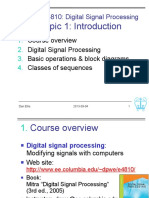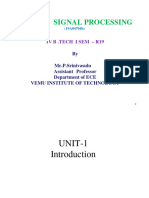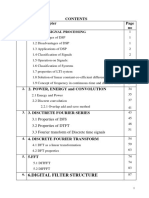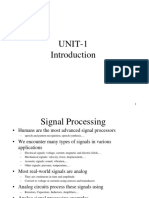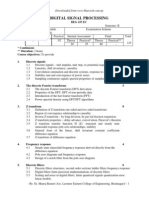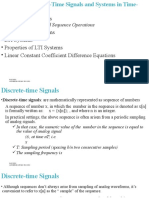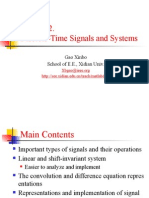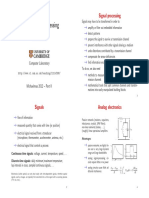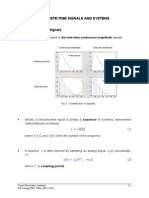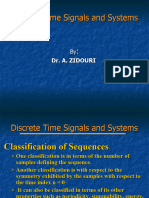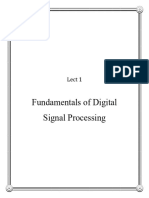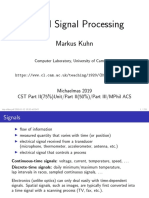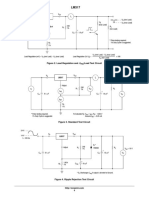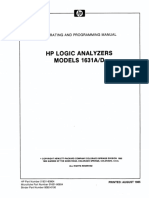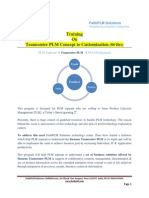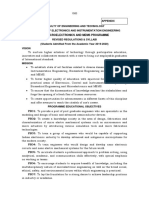0% found this document useful (0 votes)
41 views42 pagesTopic 1: Introduction: ELEN E4810: Digital Signal Processing
This document provides an overview and syllabus for the course ELEN E4810: Digital Signal Processing. The course covers topics including digital signals and systems, Fourier analysis, discrete-time Fourier transforms, z-transforms, filters, and filter design. Students will complete homework assignments, a midterm, final exam, and signal processing project using MATLAB. The goal is to provide hands-on experience with digital signal processing concepts and their practical implementation.
Uploaded by
Zeros AlmightyCopyright
© © All Rights Reserved
We take content rights seriously. If you suspect this is your content, claim it here.
Available Formats
Download as PDF, TXT or read online on Scribd
0% found this document useful (0 votes)
41 views42 pagesTopic 1: Introduction: ELEN E4810: Digital Signal Processing
This document provides an overview and syllabus for the course ELEN E4810: Digital Signal Processing. The course covers topics including digital signals and systems, Fourier analysis, discrete-time Fourier transforms, z-transforms, filters, and filter design. Students will complete homework assignments, a midterm, final exam, and signal processing project using MATLAB. The goal is to provide hands-on experience with digital signal processing concepts and their practical implementation.
Uploaded by
Zeros AlmightyCopyright
© © All Rights Reserved
We take content rights seriously. If you suspect this is your content, claim it here.
Available Formats
Download as PDF, TXT or read online on Scribd
/ 42
